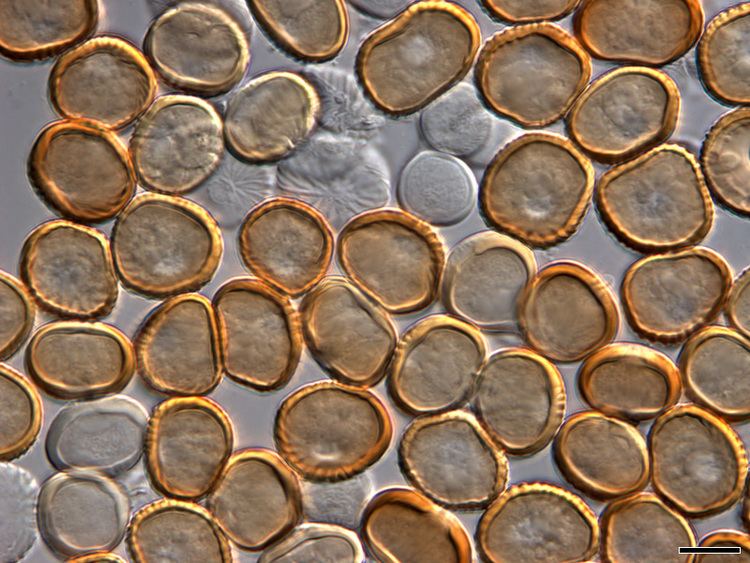Kingdom Fungi Rank Genus | Division Basidiomycota Order Rust | |
 | ||
Similar Uromycladium tepperianum, Rust, Falcataria moluccana, Falcataria, Paraserianthes | ||
Uromycladium is a genus of rust fungi in the family Pileolariaceae. It was circumscribed by mycologist Daniel McAlpine in 1905. The genus was established by McAlpine for rusts on Acacia (Fabaceae, subfamily Mimosoideae) with teliospores that clustered at the top of a pedicel.
Contents
The genus contains at least 11 species. Some of these species infect plants in the family Mimosoideae including Acacia, Paraserianthes and Falcataria. Most species are considered to be specific to only one host species of plant, such as Uromycladium simplex on Acacia pycnantha and Uromycladium falcatarium on Falcataria moluccana. Uromycladium tepperianum, on the other hand, has almost 100 known hosts including plants from several tribes of Mimosoideae. However, research suggests that this species may comprise several unrecognized taxa with narrower host ranges.
Species
Species include:
Ecology
The rust fungi in the genus Uromycladium typically form enlarged galls at the end of actively growing plant tissues. These galls can be a significant disease limiting the growth and survival of trees planted for commercial tree plantations and agroforestry. The acacia gall rust fungus species Uromycladium tepperianum has been introduced to South Africa as a biological control on the invasive Australian shrub Acacia saligna.
The galls of Uromycladium tepperianum have been reported to be used by moths in the families Gracillariidae, Tortricidae, Tineidae, Pyralidae, and Stathmopodidae as food sources and domatium for their larvae in Australia. Specifically in the family Gracillariidae the species Polysoma eumetalla and Conopomorpha heliopla are found feeding on the surface of various species of acacia rust galls. Erechthias mystacinella and Opogona comptella moth larvae from the family Tineidae have been reported to live and feed on the inside of Uromycladium tepperianum galls.
